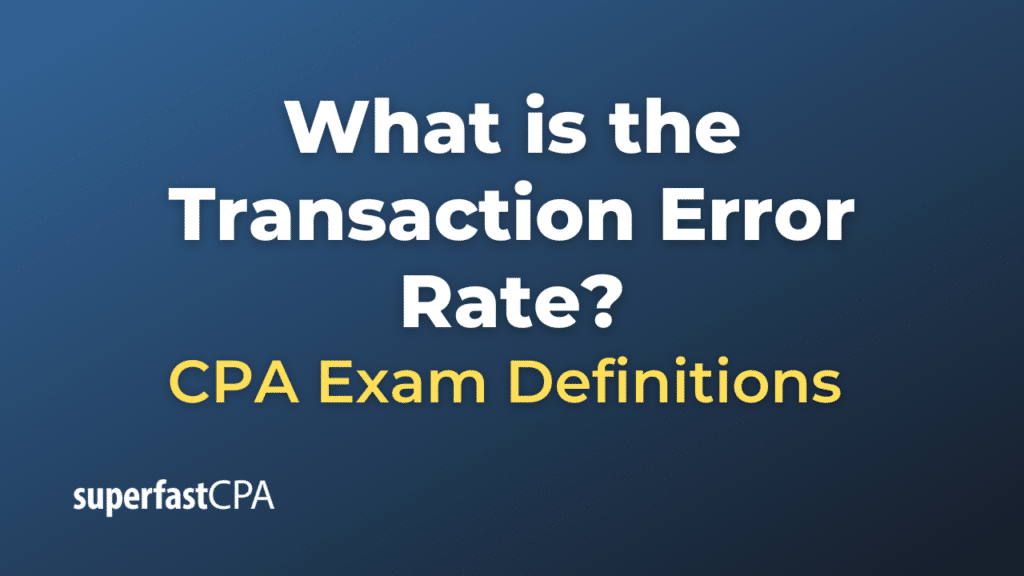Transaction Error Rate
The “Transaction Error Rate” refers to the percentage of transactions that contain errors compared to the total number of transactions processed over a specific period. It’s a measure often used in quality control, operations, and finance to identify inefficiencies, areas for improvement, or potential issues within transaction processing systems or procedures.
Calculating the Transaction Error Rate is straightforward:
Transaction Error Rate = (Number of Erroneous Transactions / Total Transactions Processed) × 100
This rate helps organizations:
- Identify System Issues: High error rates can indicate issues within a processing system or software.
- Evaluate Employee Performance: If human input is a significant part of the transaction process, error rates can be useful in assessing the performance or training needs of employees.
- Reduce Costs: Correcting errors usually involves time and resources. By identifying and addressing the root causes of high error rates, organizations can reduce the associated costs.
- Improve Customer Satisfaction: For sectors like banking or e-commerce, high transaction error rates can lead to customer dissatisfaction. Regularly monitoring and addressing these rates can enhance the user experience.
Example of the Transaction Error Rate
Let’s delve into a practical example involving a bank’s check processing department.
Scenario: Metro Bank’s Check Processing Department
Metro Bank processes a significant number of checks daily. To ensure efficiency and accuracy, they’ve implemented a system that scans and records the checks electronically. However, manual interventions are occasionally required, for example, when a check is poorly handwritten or when there’s an ambiguity in the instructions.
Given the volume of checks, the bank’s operations manager, Sarah, wants to gauge the accuracy of the process and ensure that customers’ transactions are being handled appropriately.
Data for the Month of June:
- Total checks processed: 500,000
- Number of checks with errors (e.g., wrong amounts recorded, checks not properly scanned, etc.): 2,500
To determine the Transaction Error Rate, Sarah would use the formula:
Transaction Error Rate = (Number of Erroneous Transactions / Total Transactions Processed) × 100
Plugging in the numbers:
Transaction Error Rate = (2,500 / 500,000) × 100 = 0.5%
From her calculations, Sarah determines that the Transaction Error Rate for the check processing in June is 0.5%.
Actions & Implications:
With this data in hand, Sarah might:
- Assess the Error Nature: Understanding the most common types of errors can guide training sessions or system improvements.
- Implement Training: If many errors stem from manual interventions, additional staff training might be required.
- System Enhancements: If errors are resulting from the electronic scanning system, IT teams might need to fine-tune or upgrade the software or hardware.
- Communicate with Customers: Transparency is vital. If an error affects a customer, proactive communication can mitigate dissatisfaction.
- Set Targets: Sarah might set a goal to reduce the error rate to 0.3% over the next three months, initiating continuous improvement.
The Transaction Error Rate is not just a passive metric. It’s a diagnostic tool that can lead to actionable insights, fostering efficiency, accuracy, and customer satisfaction.













